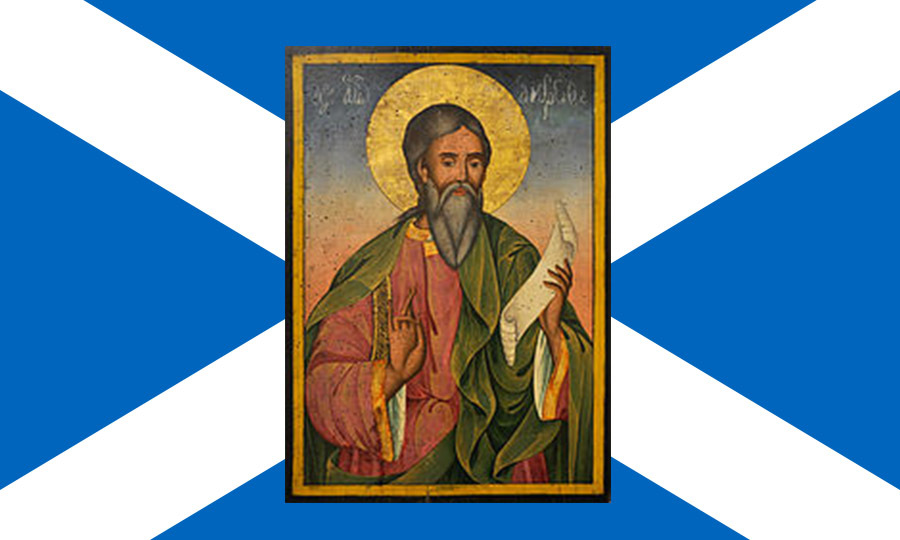
NOVEMBER 30 marks St Andrew’s Day, with Scots across the globe celebrating their heritage and culture.
But who exactly was the man after whom the day is named?
Andrew’s life
According to The Bible’s New Testament, Andrew was born in Bethsaida on the Sea of Galilee in the Middle East between AD 5 and AD 10.
The brother of St Peter, the pair lived and worked as fishermen.
Andrew, whose name means ‘manly’ in Greek, was a follower of John the Baptist before meeting Jesus and becoming one of his first disciples, alongside his brother.
He is mentioned in The Bible as being a part of the feeding of the five thousand, with values of fairness and kindness, taking what he had and sharing it with those who were less fortunate.
He is said to have travelled to Asia Minor (present day Turkey) and the Black Sea to spread his message.
Death
Andrew was sentenced to death by the Romans in Greece and was crucified.
It is thought that he asked to die on a diagonal cross as he felt he wasn’t worthy of dying on one the same shape as Jesus had.
He was tied to the cross with ropes rather than being nailed to it.
It became known as St Andrew’s Cross, seen today on Scotland’s saltire flag.
Andrew’s legacy
Some say Andrew travelled great distances to spread Jesus’ message, including a trip to Scotland, building a church in Fife at the place now known as St Andrews.
However, it is unlikely that this is true or that he was ever in the country when he was alive.
After his death, some of his remains made it to Scotland and were kept in St Andrews.
One legend says they were brought from Greece to Fife after the carrier, St Regulus, was shipwrecked off the east coast.
The keeper of Andrew’s relics was told in a vision to hide some of them as, days later, Emperor Constantine would remove the remaining parts of Andrew’s body to Constantinople.
Regulus, later known as Rule, was told by another angel to take the bones and head west, and lay the foundations of a church wherever he ended up shipwrecked.
Rule’s ship came ashore at the village of Kilrymont in Fife, which would later become St Andrews.
It is more likely, however, that Andrew’s remains were brought north from the monastery of Hexham in Northumberland in the 8th Century.
The relics, along with the Cathedral housing them, were destroyed in the Protestant Reformation.
But traces of Andrew would return to Scotland in more modern times.
In the 1870s, the Archibishop of Amalfi – a city in Italy where Andrew is also the patron saint – sent what is apparently a piece of Andrew’s shoulder blade to Scotland. It has since been stored in St Mary’s Cathedral in Edinburgh.
And in 1969, part of the skull of the saint was given to to the Archbishop of St Andrews and Edinburgh by Pope Paul VI.
The patron saint
In the 9th century, Pictish king Angus mac Fergus had a vision of the saint and saw a saltire in the sky before victory in battle at Athelstaneford, East Lothian.
He ordered the Cross of Saint Andrew to the the badge of the Picts in honour of the victory.
Again, this is but a story, and seems based on what happened when Roman Emperor Constantine the Great became convinced by the power of Christianity after victory at Milvian Bridge in AD 312.
Robert the Bruce led his soldiers into the Battle of Bannockburn in 1314 with the cross of St Andrew on their tunics.
Andrew officially became Scotland’s patron saint in the 1320 Declaration of Arbroath, a letter sent to Pope John XXII declaring the nation’s independence.
The Declaration argued that Scots were a distinct people, protected by St Andrew.
William Wallace’s battle-cry was “St. Andrew mot us speed” (May Saint Andrew support us).
A national day
It wasn’t until the 18th century that St Andrew’s Day celebrations became a tradition.
Surprisingly, it began in the USA, with a group of ex-pat Scots who were keen to rekindle their Scottish connections.
The St Andrew’s Society of Charleston, South Carolina, was formed in 1729 by rich Scottish immigrants who, true to the ideals of St Andrew, helped orphans and widows in the area.
New York’s oldest charity is their St Andrew’s Society, founded in 1756.
These organisations spread across the world, with the anniversary of Andrew’s death becoming our national day.
It is now recognised as a public holiday, however the decision rests with employers on whether or not people are granted a day off.
Andrew is also the patron saint of several other countries, including Greece, Russia, and Barbados

Enjoy the convenience of having The Sunday Post delivered as a digital ePaper straight to your smartphone, tablet or computer.
Subscribe for only £5.49 a month and enjoy all the benefits of the printed paper as a digital replica.
Subscribe